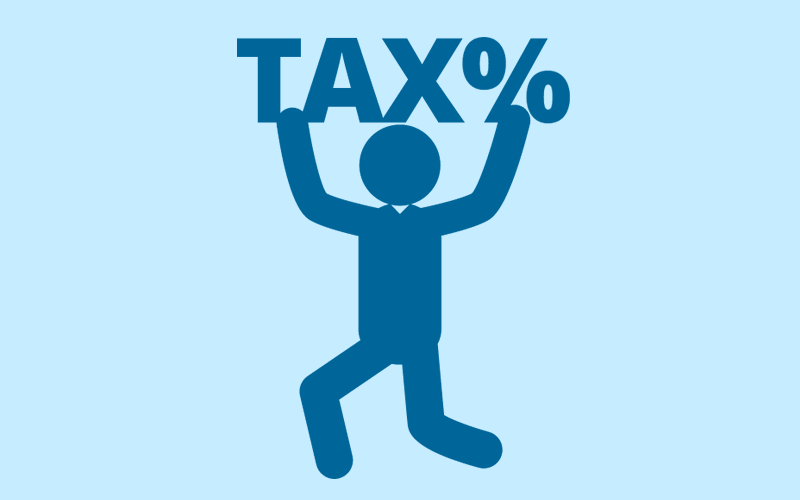Balloon Modelling Academy Diploma

Module 9 : Insurance, Accounting and Tax
Duration: Approx 0 minutes
In this module you will learn:
- About the types of insurance policies which you will need to take out when you set up a balloon modelling business
- What public liability insurance is
- How to keep on top of your accounts
- Whether you need to pay national insurance
- How to fill out a tax return for your business
9.1: Insurance
 When working in any profession, the sincere hope is that nothing will ever go wrong.
When working in any profession, the sincere hope is that nothing will ever go wrong.Having already completed the module on Health & Safety and Risk Assessments, you should now know the best ways to prevent any potentially dangerous situations from arising, but you can never plan for the unexpected. Unfortunately, when you are working with other people around you, especially children, you cannot predict their actions or movements accurately enough to know that nothing bad will happen. This is why it is extremely important to take out a comprehensive insurance package, so that in the event of an accident in which someone gets hurt, you are fully covered.
The equipment that you will need to be a professional balloon modeller is not necessarily very expensive when you look at individual items, but if all of your equipment were stolen or damaged in one go, it would cost a lot to replace everything. As well as insuring yourself and your clients against harm, you should also insure all of your professional equipment, so that if it is lost, damaged or stolen, you will be able to replace it and be back in business in next to no time.
9.2: Public Liability Insurance
 Public liability insurance is a must when you are running your own business.
Public liability insurance is a must when you are running your own business. This is the type of insurance which will pay out if somebody is injured, killed or their property is damaged because of your business. Taking out this kind of policy will mean that the insurance provider, and not you, will pay to replace damaged property or to compensate members of the public who have been injured as a direct result of actions taken by you or your business.
This means that you will not suffer serious financial loss if something does happen whilst you are running your business.
This type of cover does not include insurance to cover yourself or your property, but you can buy a combined policy for small businesses which will cover all of the types of insurance that you need, and could save you money in the process.
9.3: Accounting
 When you run your own business you become accountable and responsible for every area of that business.
When you run your own business you become accountable and responsible for every area of that business. It can be a daunting feeling, to know that you suddenly have complete control over the finances of your entire business; especially if you have never done anything like this before. The important thing is to keep an accurate and comprehensive record of all of your transactions. Every time that you pay for something for the business, or someone pays you for work which you have done, you will need to log it in your records. Doing a little bit of accounting every week will save you from having to put in hours at a time, all in one go, when things get out of hand.
It is really important to stay on top of your accounts, as this is a crucial measure of how well your business is doing. If you are up to date with your accounts then you will know how much profit you have made and can make projections for how much you are likely to make in the future. This will help you to plan ahead to make bigger payments, such as buying new equipment or paying your tax bill.
Keeping track of your accounts will also show you if there is anything about the business model that you need to change. For example, if you find that you are spending too much on petrol, then you can start to charge an extra fee for clients who are further away.
If your costs have increased due to inflation or a rise in the price of balloons, then you will need to see if you have to pass this extra cost on to your customers in order to continue to turn a profit.
9.4: Tax
 As the only employee in your business, it will be your responsibility to keep on top of your tax payments and to manage the amount of tax which you pay each year.
As the only employee in your business, it will be your responsibility to keep on top of your tax payments and to manage the amount of tax which you pay each year. As you will be running your own business, you will be classed as self-employed with HMRC, but you will need to register yourself as a sole trader on their website.
Instead of paying tax from a monthly or weekly pay-check, as a sole trader you are more likely to pay tax twice a year: on 31st January and on 31st July. Unlike when you are working as someone else's employee, the tax which you need to pay is not calculated for you from what you are earning. Instead, you will need to set aside money in order to pay future tax bills twice a year. It is extremely easy to forget that you will need to pay anything to the government, especially when you are just setting up your business and are probably clearing debts of other kinds for the first few months. Even if you yourself do not get to keep much of the money you are making, any profit generated by the company will need to be accounted for so that you are paying the correct amount of tax.
The HMRC website is very helpful if you have any specific questions about how much tax you should be paying, or where you should be paying it to. They also have a tool called the 'ready reckoner' which helps you to use your average weekly profit to plan ahead for how much tax you will need to pay in 6 months' time. You can use this tool to work out exactly how much money you will need to set aside to be able to pay your first tax bill.
If you begin to take over £85,000 in revenue a year then you will also need to register your business for VAT, although this is unlikely to be necessary at least for the first few years of your business. If it suits you to register your company before this then you can do; it only becomes compulsory once you have reached over £85,000 in annual revenue, but it is still an option if you earn less than this.
9.5: National Insurance
 Don't forget that along with having to pay tax on the profits from your business, you will also need to make national insurance contributions in line with how much you earn.
Don't forget that along with having to pay tax on the profits from your business, you will also need to make national insurance contributions in line with how much you earn. There are two separate rates of national insurance which you will pay if you are self-employed. Class 2 is the rate for anyone earning £6,365 or more a year, and Class 4 is what you will have to pay if your profits are £8,632 or above each year. Class 2 equates to a straightforward payment of £3.00 every week. Class 4 is slightly more complicated and requires you to pay 9% on any profits between £8,632 and £50,000 a year and 2% on any profits which are above £50,000 a year.
Whether you qualify to pay Class 2 or Class 4 national insurance rates, you will need to pay them through self-assessment. This is a system used by HMRC in which you fill out a tax return and send it after the end of the tax year. You can either choose to fill out a paper form or to complete your self-assessment and tax return online. The deadlines for completing your tax returns are 31st January and 31st July. You will need to allow an extra 3 weeks the first time you fill out a tax return as you will have to go through the registration process first.
Once you have filled out all of the information necessary to complete your tax return, HMRC will calculate how much tax you owe them based on what you have said in your report. Exactly how much tax you will have to pay will depend entirely on how much you earn and what tax band you fall into. Once your tax has been calculated, you will be given a certain period of time in which to pay the amount to HMRC. It is essential that you make the payment within this time frame.
Now that you have finished reading this chapter, hopefully you will understand more about the types of insurance that you will need to purchase to cover your balloon modelling business, as well as why it is vital that you stay on top of your accounts and how you go about filling in a tax return.
Module Summary
Lessons Learned
You'll need to get insured for your equipment, public liability, and personal accident and injury, to prepare for risks to yourself, others, or property; shop around for a small-business package to get a good deal.
Stay up to date with your accounts, keeping track of all of your income and expenditure, so you can make financial forecasts, make changes to your business model, and factor-in future expenditure. You'll need to submit your self-assessment and tax return, usually twice a year, and it's crucial that you plan ahead to have the funds available to pay these bills when HMRC replies to your submissions with an amount.
Learning Topics
- About the balloon modelling industry
- What it takes to make it in this line of work
- Why you must be able to separate your personal problems from your public performance
- Why setting up your own business is the only way to make it as a balloon modeller
Learning Topics
- Why children’s parties are the most common types of work for a balloon modeller
- About adult entertainment at both formal and informal occasions
- How to make sure that you are up-to-date with the latest crazes and trends to keep yourself competitive
- About the different ways you sell your services
Learning Topics
- What the best type of balloons are for making models
- How marker pens can make all the difference to your work
- About the equipment you can buy to help keep your bookings more organised
- Why it is a good idea to have your own transport
Learning Topics
- Why it is important to arrive early to all of your booked events
- How to make sure that you appear professional at all times
- What is in the code of conduct laid out by Equity
- How to adhere to child protection standards
Learning Topics
- What goes into a good risk assessment
- How to carry out a risk assessment
- How to rate a hazard in terms of severity and probability
- Who you need to protect in terms of health and safety
Learning Topics
- What information you need to gather from your client when taking a booking
- The tools available to help you manage and keep on track of your bookings
- Ways to manage your time more effectively
- Why you should consider making clients sign a booking contract
Learning Topics
- How to set different pricing strategies
- The sort of costs which you will face as a balloon modeller
- How to keep on track of your income and expenditure
- How to go about determining the prices that you charge for your events
Learning Topics
- How to conduct market research
- What goes into a business plan
- Why it is important to be flexible
- How to add value to the service you provide
Learning Topics
- About the types of insurance policies which you will need to take out when you set up a balloon modelling business
- What public liability insurance is
- Whether you need to pay national insurance
- How to fill out a tax return for your business
Learning Topics
- How to make the most of social media and online marketing tools
- Why networking is still important
- Other ways to market your business which do not involve the internet
- What to include on your advertising material
Learning Topics
- How to correctly deal with complaints
- How to approach every problem with the appropriate context
- What you should do if you haven’t taken many bookings in a while
- How to deal with last minute damage to equipment
Learning Topics
- What the basic techniques of balloon modelling are
- How to twist balloons
- How to correctly pump and tie balloons
- Includes video tutorials
Learning Topics
- How to make a balloon dog - picture tutorial
- How to make a balloon dog - video tutorial
Learning Topics
- How to make a balloon elephant - picture tutorial
- How to make a balloon elephant - video tutorial
Learning Topics
- How to make a balloon rabbit - picture tutorial
- How to make a balloon rabbit - video tutorial
Learning Topics
- How to make a balloon parrot - picture tutorial
- How to make a balloon parrot - video tutorial
Learning Topics
- How to make a balloon crocodile - picture tutorial
- How to make a balloon crocodile - video tutorial
Learning Topics
- How to make a balloon reindeer - picture tutorial
- How to make a balloon reindeer - video tutorial
Learning Topics
- How to make a balloon turtle - picture tutorial
- How to make a balloon turtle - video tutorial
Learning Topics
- How to make a balloon monkey in a tree - picture tutorial
- How to make a balloon monkey in a tree - video tutorial
Learning Topics
- How to make a balloon teddy bear - picture tutorial
- How to make a balloon teddy bear - video tutorial
Learning Topics
- How to make a balloon biplane - picture tutorial
- How to make a balloon biplane - video tutorial
Learning Topics
- How to make a balloon flower - picture tutorial
- How to make a balloon flower - video tutorial
Learning Topics
- How to make balloon fairy wings - picture tutorial
- How to make balloon fairy wings - video tutorial
Learning Topics
- How to make a balloon sword - picture tutorial
- How to make a balloon sword - video tutorial
Learning Topics
- How to make a balloon twisty hat - picture tutorial
- How to make a balloon twisty hat - video tutorial
Module 6 : Taking / Managing Bookings – Establishing Job Requirements – and Time Planning
find out what clients wants puppets magic how many puppets
Module 2 : The Types of Work/Jobs Balloon Modellers Do
Keep up to date with trends. Incorporate jokes, games, competitions and stories into the "act". Don't just nice up the birthday girl/boy, ensure the other children have a great time and will want to ask their parents to book you for their party.
Module 3 : The Equipment and Materials You Will Need for Balloon Modelling
Possibly a tool chest to store different colour balloons, pens, ribbons accessories. A costume or two with deep pockets.
Frequently Asked Questions
To progress on to the next module of your course scroll to the bottom of the current module and press the “NEXT” button. This will take you directly to the following module.
Once you have completed the last module of the course please click on the button at the bottom of the module that says “START”. This will take you to the test.
The pass mark for the end of course test is 70%
Yes, you can re-take your test as many times as you need to.
No, once you have passed a test it is not possible to retake it.
When logging on to your course directly through our site you have lifetime access.
Click on the “My Profile” button at the top of any page on our site. This will take you to your profile page. Once there scroll down to the section headed “Edit Your Profile” and enter your new password.
Please click here to contact our student support team
If you would like to go back and view a completed module you can do this by clicking the “Course Modules” option from the side bar menu of your course. This will take you to a list of the modules contained within your course. Simply select the module you wish to study again.
Please click here to find out how to save your course modules as PDF files
Worksheets
There is no worksheets for this course.
Module PDF's
Module 1: Your Introduction to Becoming a Balloon Modeller
Module 2 : The Types of Work/Jobs Balloon Modellers Do
Module 3 : The Equipment and Materials You Will Need for Balloon Modelling
Module 4 : Code of Conduct / Child Protection
Module 5 : Health & Safety and Risk Assessments
Module 6 : Taking / Managing Bookings – Establishing Job Requirements – and Time Planning
Module 8 : Starting / Running Your Own Business
Module 9 : Insurance, Accounting and Tax
Module 10 : Marketing Your Business & Social Media
Module 11 : The Do’s and Don’ts and What to Do When Things Don’t Go to Plan
Module 12 : Balloon Modelling Techniques: The Basics
Module 13 : How to Make a Balloon Dog
Module 14 : How to Make a Balloon Elephant
Module 15: How to Make a Balloon Rabbit
Module 16: How to Make a Balloon Parrot
Module 17: How to Make a Balloon Crocodile
Module 18: How to Make a Balloon Reindeer
Module 19: How to Make a Balloon Turtle
Module 20: How to Make a Balloon Monkey in a Tree
Module 21: How to Make a Balloon Teddy Bear
Module 22: How to Make a Balloon Biplane
Module 23: How to Make a Balloon Flower
Module 24: How to Make Balloon Fairy Wings